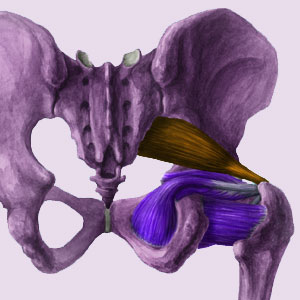
Heat or ice for piriformis pain are both potentially effective symptom reducers. Heat and ice are some of the oldest medical therapies in the world, having been used by virtually all cultures since the dawn of humankind. Although much has changed in the modern medical sector since these treatments were first utilized, the efficacy of ice and heat remain potent choices for patients with any type of pain.
Heat and ice can both be used at home as part of a self-managed pain relief program. These treatments can be easily adapted for use on the go, providing pain reduction wherever and whenever required. Heat and ice can also be parts of professional pain management services and can be delivered in several methods of care. Few therapeutic modalities are as flexible and versatile as heat or ice for these and many other reasons.
This dissertation focuses on the use of heat or ice for piriformis pain caused by a range of diagnoses. We will detail the benefits of treatment, as well as any potential downsides that should be considered.
Heat for Piriformis Pain
Heat is deep penetrating and soothing for many painful complaints. Heat can be used directly on the piriformis area in the hip/buttocks region to relieve pain locally or may be used on any area of the lower body where pseudo-sciatica symptoms might occur.
Heat can be applied using a warm gel pack for maximum convenience of treatment. These packs can be heated in any microwave or in hot water and are ready to go in about 30 seconds. Wet heat might be more effective and can be applied using a hot, wet towel or applied directly in a steamroom, hot shower or bath. Saunas might be effective for some patients, but treatment statistics tend to support wet heat as being the most beneficial for the majority of patients.
Just be sure not to make any heat source too hot or risk burns. Always wrap gel packs in a clean cloth prior to application and check the temperature of any heat source prior to applying it to the skin.
Ice for Piriformis Pain
Ice is also easy to use at home or on the go. We tend to recommend frozen gel packs as the best way of applying ice, but be certain to always wrap these in a clean cloth to prevent tissue damage to skin. Ice packs tend to stay cold for a long time, allowing patients up to 20 minutes of uninterrupted relief that will likely endure twice as long once the ice is removed.
Cold therapy can also consist of real ice wrapped in a cloth, although this method is a bit messy. If you do not have a gel pack available and choose to utilize actual ice, it is best to place the cubes in a ziplock bag before wrapping it in the applicator cloth to contain leaks and make it less likely to fall apart during utilization.
Never leave ice applied for more than 20 minutes at a time to prevent potential damage to skin and other tissues. Likewise, never apply ice directly to the skin or face possibly severe trauma to the region that might cause permanent effects.
Heat or Ice for Piriformis Patient Guide
Heat or ice for piriformis pain are both great and can be even better when combined. We tend to advise using ice for the first 48 hours of pain, followed by heat thereafter. Ice can be applied as needed, 15 to 20 minutes on, then wait at least 1 hour before applying again. Heat can be applied as need, but the same time schedule suits most patient requirements. Some patients achieve the best results using ice followed by heat or vice versa. It is best to experiment and see what works best for you in terms of providing safe, simple and inexpensive pain relief.
Ice and heat can be provided in professional care settings, as well. Cryotherapy can be an important aspect of other types of care, including chiropractic and massage. Invasive cryotherapy can treat the deep tissues of the piriformis muscle or even be used as a nerve block during the least invasive surgical techniques.
Meanwhile diathermy treatment is also a great accompaniment to chiropractic or bodywork and can be applied using traditional or modern methods including a variety of high-tech solutions that can deliver penetrating heat deeply into the body using ultrasound, radio waves, lasers or other methods of care.
Piriformis Pain > Piriformis Treatment> Heat or Ice for Piriformis





